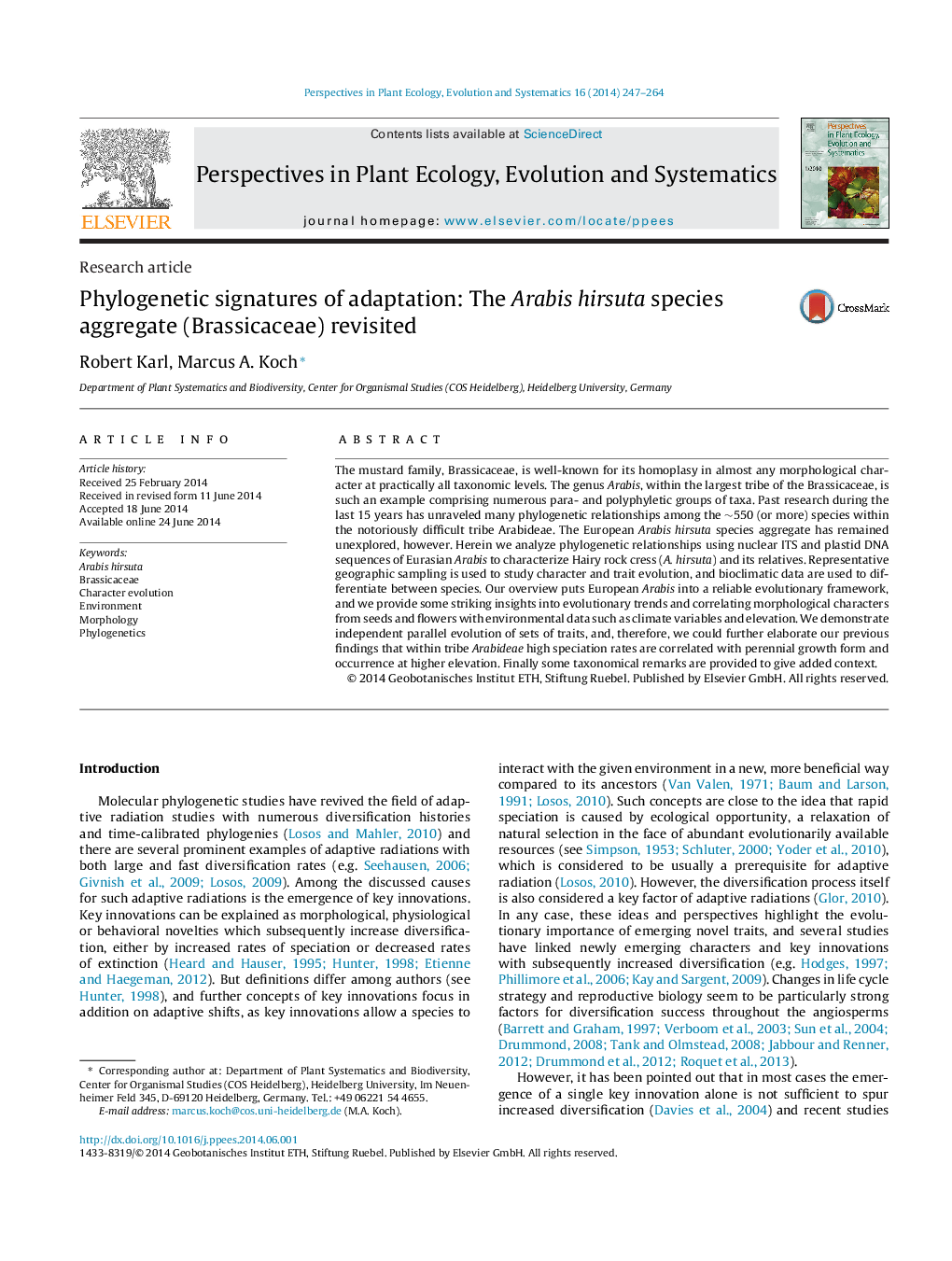| کد مقاله | کد نشریه | سال انتشار | مقاله انگلیسی | نسخه تمام متن |
|---|---|---|---|---|
| 4401048 | 1307051 | 2014 | 18 صفحه PDF | دانلود رایگان |

The mustard family, Brassicaceae, is well-known for its homoplasy in almost any morphological character at practically all taxonomic levels. The genus Arabis, within the largest tribe of the Brassicaceae, is such an example comprising numerous para- and polyphyletic groups of taxa. Past research during the last 15 years has unraveled many phylogenetic relationships among the ∼550 (or more) species within the notoriously difficult tribe Arabideae. The European Arabis hirsuta species aggregate has remained unexplored, however. Herein we analyze phylogenetic relationships using nuclear ITS and plastid DNA sequences of Eurasian Arabis to characterize Hairy rock cress (A. hirsuta) and its relatives. Representative geographic sampling is used to study character and trait evolution, and bioclimatic data are used to differentiate between species. Our overview puts European Arabis into a reliable evolutionary framework, and we provide some striking insights into evolutionary trends and correlating morphological characters from seeds and flowers with environmental data such as climate variables and elevation. We demonstrate independent parallel evolution of sets of traits, and, therefore, we could further elaborate our previous findings that within tribe Arabideae high speciation rates are correlated with perennial growth form and occurrence at higher elevation. Finally some taxonomical remarks are provided to give added context.
Journal: Perspectives in Plant Ecology, Evolution and Systematics - Volume 16, Issue 5, 10 October 2014, Pages 247–264